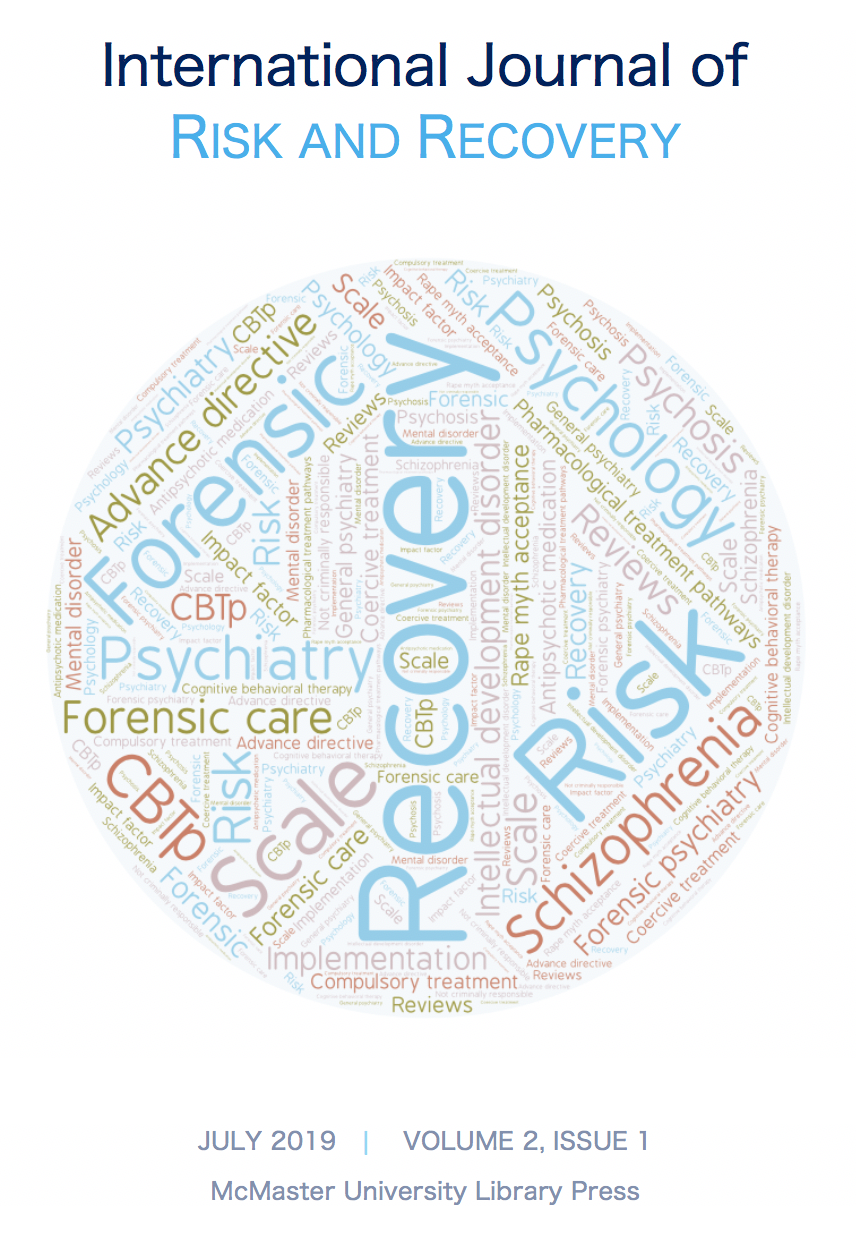Forensic Psychiatry in the largest security ward in Portugal
DOI:
https://doi.org/10.15173/ijrr.v2i1.3501Keywords:
Intellectual developmental disorder, Forensic care, Schizophrenia, pharmacological treatment pathwaysAbstract
Forensic Psychiatry is defined as the Psychiatry subspecialty in which the clinical and scientific knowledge is applied to legal aspects, both with regard to Civil and Criminal Law. Nowadays, the largest security ward is in Coimbra, at the University Hospital. It covers 110 patients, 90 males and 20 females. The aim of the security measure, in accordance with the penal code, is the protection of legal assets and the psychosocial rehabilitation. In our sample, the main most frequent diagnosis was schizophrenia (37.8%). Moderate intellectual disability (23.4%) and mild intellectual disability (14.4%) were the second and third most frequent diagnosis. The unlawful acts that generated the prevalent security measure were in first place domestic violence (19,8%) followed by attempted murder (16,2%) and theft (14,5%). The elaboration of a therapeutic and rehabilitation plan is essential and its aim is to diminish the person’s dangerousness. It is fundamental to think of the safety ward as a health production space and not as a place of mere disease management or “dangerous states”, thus trying to solve the patient’s problems.
References
Ey H, Bernard P, Brisset CH. Manuel de Psy-chiatries. 6e édition. Paris: Masson; 1989.
Ramlho E., Themudo Gilman W (transl.). The Portuguese Penal Code (general part). Verbo Juridico; 2006. (accessed on Jul 3, 2019)
Lei n.º 48/2007 de 29 de agosto 2007. Diário da República, 1.ª série, n.º 166. (accessed on Jul 3, 2019)
Antunes MJ. O internamento de imputáveis em estabelecimentos destinados a inim-putáveis:(os arts. 103., 104. e 105. do Código Penal de 1982). Coimbra: Coimbra Editora; 1993.
Rodrigues, A. Determinação da pena privativa de liberdade: os critérios da culpa e da prevenção. Coimbra: Coimbra editora; 1995.
Antunes MJ. Medida de Segurança de Inter-namento e Facto de Inimputável em Razão de Anomalia Psíquica. Coimbra: Coimbra editora; 2002.
Gellner E. Razão e Cultura. Lisboa: Editorial Teorema; 1992.
Antunes MJ, Pinto IH. Execução das Penas e Medidas Preventivas de Liberdade. 2nd Ed. Coimbra: Coimbra Editora; 2013
Saraiva CB. Cerejeira, J. Psiquiatria Funda-mental. 1st Ed. Lisboa: Lidel; 2014
Miller AL, Hall CS, Buchanan RW, Buckley PF, Chiles JA, Conley RR, et al. The Texas medication algorithm project antipsychotic algorithm for schizophrenia: 2003 update. J Clin Psychiatr. 2004;65(4):500-8.
Falkai P, Wobrock T, Lieberman J, Glenthoj B, Gattaz WF, Möller HJ, WFSBP Task Force on Treatment Guidelines for Schizophrenia. World Federation of Societies of Biological Psychiatry (WFSBP) guidelines for biological treatment of schizophrenia, Part 1: acute treatment of schizophrenia. World J Biol Psychiatr. 2005;6(3): 132-91.
Leucht S, Corves C, Arbter D, Engel RR, Li C, Davis JM. Second-generation versus first-generation antipsychotic drugs for schizophre-nia: a meta-analysis. Lancet 2009;373(9657): 31-41.
Lei n.º 36/98 de 24 de Julho 1998. Lei de Saúde Mental. Diário da República, 1.ª série, n.º 169. (accessed on Jul 3, 2019)
Downloads
Published
How to Cite
Issue
Section
License
Copyright Notice
Authors who publish with this journal agree to the following terms:
- Authors retain copyright of their work and grant the International Journal of Risk and Recovery the right of first publication with the work simultaneously licensed under a Creative Commons Attribution License. This allows others to share the work with an acknowledgement of the work’s authorship and initial publication in this journal.
- Authors are able to enter into separate, additional contractual arrangements for the non-exclusive distribution of the journal’s published version of the work (e.g., post it to an institutional repository or publish it in a book) with an acknowledgement of its initial publication in this journal.
- Authors are permitted and encouraged to post their work online (e.g., in institutional repositories or on their websites) before and during the submission process as it can lead to productive exchanges, as well as earlier and greater citation of published work. (See The Effect of Open Access.)

